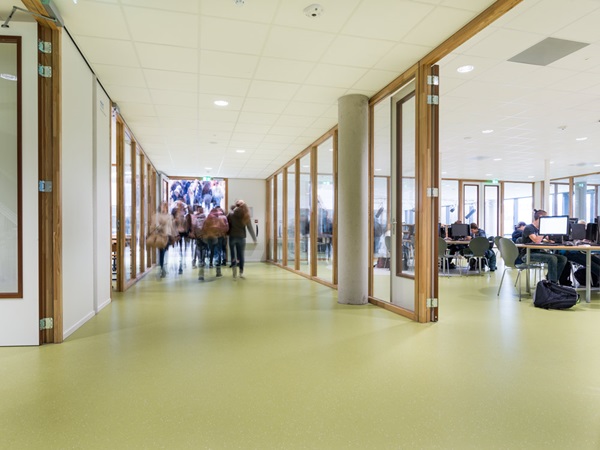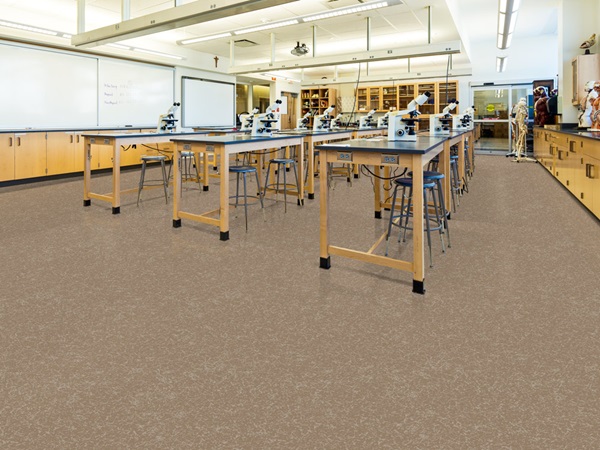
A recent report estimates that colleges and universities account for 1.4 billion gross square feet in over 40,000 buildings that support more than three million students.
Knowing the physical environment has a direct impact on outcomes, such as student performance, colleges and universities continue to embrace the principles of human-centered and evidence-based design for product selection in support of a safe and healthy learning environment.
The Importance of Evidence-Based Design (EBD)
The built environment can be broken down into specific areas, including physical and construction features and building materials, to demonstrate how building features affect health. These features influence a student’s absorption and processing capabilities and impact student and faculty retention. Applying EBD to specification of interior finishes allows designers to focus on the impact of the built environment on its occupants.

Indoor Air Quality, Acoustics, Safety and Comfort
Excellent indoor air quality (IAQ) can impact the health and safety of university students, faculty and staff, resulting in reduced absenteeism, improved speech intelligibility, enhanced physical safety and better cognitive function. While the amount of volatile organic compounds emitted from a single floor waxing is comparable to the amount emitted from the flooring itself over its entire lifetime, premium rubber flooring cleans with little more than water and never requires coating, stripping or refinishing.
When it comes to acoustics and education, the ability to hear and be heard is essential in the learning process. Premium rubber flooring is up to four times quieter in dBA than vinyl composite tile, ideal for large lecture halls which can pose auditory challenges for students.
Resilient flooring promotes safety and comfort for all. Non-coated premium rubber floors have a high Coefficient of Friction (COF) range of .76 to 1.0, ideal for dining halls or gymnasiums where floors are often wet. Premium rubber also reduces musculoskeletal stress for faculty and staff who spend a majority of the day on their feet. Musculoskeletal disorders cost more than $20 billion per year and account for one-third of worker compensation costs.
The Impact of Life-Cycle Cost Analysis (LCCA)
A coated floor can consume 80 to 90 percent of the operational budget in floor maintenance alone due to the stripping, coating and refinishing protocol, greatly impacting total cost of ownership (TCO). An LCCA can inform decisions for the specification, purchase, installation and maintenance of flooring, helping colleges and universities lower operational expenses while increasing the health and safety of students, faculty and staff.
For more information on how flooring supports 21st-century learning in colleges and universities, download our whitepaper.

 USA | English (US)
USA | English (US)